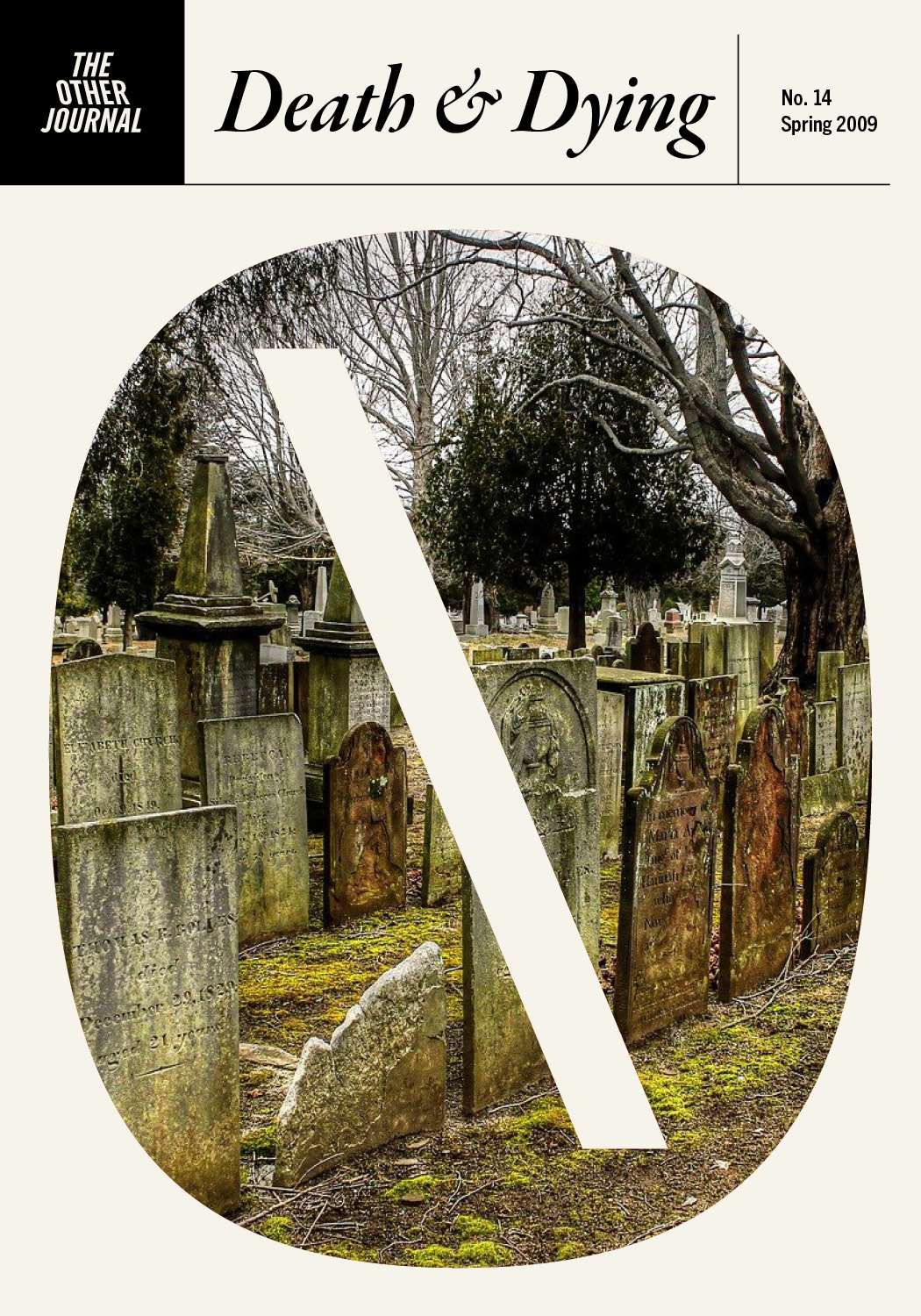Hell: The Nemesis of Hope?
Nicholas Ansell looks at the doctrine of hell in contemporary evangelicalism using John Stott’s view of hell as a point of critical reflection on the subject

Nicholas Ansell looks at the doctrine of hell in contemporary evangelicalism using John Stott’s view of hell as a point of critical reflection on the subject
Several works by the world-renowned artist Damien Hirst that confront the boundaries between art, pop culture, science, and our views on life and death.
Eric Severson explores the neglected day of Christianity’s Holy Saturday by way of Plato’s concept of khora, offering a perspective on Sabbath that includes the darkness and despair of the “middle day.”
A review of Death’s & Transfigurations by Paul Mariani.
In this creative nonfiction piece, a woman recycles her dead lover’s computer and discovers the difficulty of letting go.
A review of what Brent Laytham’s book, God Does Not, does and does not do in the way of fostering imaginative, theological discernment for the church with regard to God’s activity in the world.
A poem by Liz Dolan explores children’s responses to death.
This article looks at Mark C. Taylor’s theology as it relates to Thomas J. J. Altizer and Death of God theology.
A conversation with Dr. Joel Shuman on the bodily enactment of the church, specifically how it deals with death and dying, in a disembodied world.
In this essay, a gravedigger’s daughter considers the meaning of mercy.
This essay advocates a biblical emphasis on life promotion and suicide prevention as freedom from a fatalistic and tragic life, especially in contrast to the ancient Greek fascination with death and suicide.
Barry Krammes’s work is reminiscent of the Old World, laden with stark bygones of stories that hold pain, suffering, and disaster. And yet, the meaning of these sculptural pieces of calamity, past, innocence, and insanity speak to each viewer in extraordinarily different ways.
On November 23, 1993, my wife and I were suddenly thrown into an unknown country, the one of people with disabilities and their families.1 Our daughter Karis was born with cerebral palsy. All four hemispheres of her body suffered significant movement damage; she could not eat, get dressed, brush her teeth, comb her hair, or […]
This review theologically examines the presence of faith, beauty, and love in the new U2 album NO LINE ON THE HORIZON.
A renewed celebration of an old classic of life and truth, poetry and prose: The Journal of Jules Renard.
A poem by Cristin O’Keefe Aptowicz that describes a non-eyewitness response to the terrorist attacks on the World Trade Center.
Mourning death is dramatically different around the world, as is the care people need in the face of death.
This is a review of William T. Cavanaugh’s Being Consumed: Economics and Christian Desire.
This art exhibit from Shimon Sakakibara includes two-dimensional paintings, two installations, and a review by Jen Grabarczyk; it speaks to a loss of hope and a deceptive sense of life and meaning in individuals, specifically in regards to youth.
This essay explores issues of meaning and divine providence in the context of Mary Doria Russell’s THE SPARROW.
This essay argues that although it is common in contemporary philosophy to claim that the ineluctability of death entails its internality, thinking of death as ineluctable and external is much more fruitful.
Anne Siems’s quiet and classical paintings are haunting and disturbing.
Cate Whetzel reviews Katie Ford’s “Colosseum,” a book of poems that “record [the] anxiety, trauma, and stunned sense of coping” of “the loss of New Orleans” and “the destruction and devastation of the classical world.”
A poem by Brian G. Phipps that dwells between waking and sleeping, life and death.
By helping people die well, the church can confront the new challenges of the posthuman project.
What could a worldly professor learn from a saint about dying as a means of living out a calling in Christ?
A poem by Christina Cook meditates on death and rebirth during wartime.
A poem by Jesseca Cornelson.
In ‘The Great Emergence,’ Phyllis Tickle gives a concise overview of church history, describes a cycle of immense change, and pinpoints the present as a moment of great upheaval, opportunity, and change.
Two strange stories from the Old Testament illuminate our own tension over whether or how to quantify the human cost of military action.
This essay proposes a philosophy that is committed to truth and passionate for comprehensive wisdom, one that expresses suffering out of hope for God’s future.
As one of several performances within Sacred Offense: Studies in Art, Aesthetics and Spirituality, Concrete Cruciform explores the relationships between the sacred and offensive, the ascetic tradition of Christianity and contemporary performance-based art, and artistic and spiritual practice, as well as integrating concepts of internal and external deserts, death in life and life in death, the aesthetic experience of the sublime, and the interplay of kenosis (emptying) and pleroma (filling).
A former mountain climber defies death, this time, from her wheelchair.
In this essay the author explores the fraternal worldview exhibited in the work of Francis of Assisi as a contemporary source for Christian hope in the face of death.
n this interview, Sister Helen Prejean of ‘Dead Man Walking’ fame tells about her fight to overturn the death penalty and save innocent men and women on death row.
In this interview, Charles Taylor discusses how his findings as part of the Quebec Commission square with the analysis of contemporary society set forth in “A Secular Age,” addressing such topics as secularism, accommodation, Islamophobia, and the politics of mobilization.